Business Continuity For Dummies
by Stuart Sterling, Brian Duddridge, Andrew Elliott, Michael Conway and Anna Payne

Business Continuity For Dummies
Published by
John Wiley & Sons, Ltd
The Atrium
Southern Gate
Chichester
West Sussex
PO19 8SQ
England
This edition first published 2012
2012 John Wiley & Sons, Ltd, Chichester, West Sussex.
Registered office
John Wiley & Sons Ltd, The Atrium, Southern Gate, Chichester, West Sussex, PO19 8SQ, United Kingdom
For details of our global editorial offices, for customer services and for information about how to apply for permission to reuse the copyright material in this book please see our website at www.wiley.com .
All rights reserved. No part of this publication may be reproduced, stored in a retrieval system, or transmitted, in any form or by any means, electronic, mechanical, photocopying, recording or otherwise, except as permitted by the UK Copyright, Designs and Patents Act 1988, without the prior permission of the publisher.
Wiley publishes in a variety of print and electronic formats and by print-on-demand. Some material included with standard print versions of this book may not be included in e-books or in print-on-demand. If this book refers to media such as a CD or DVD that is not included in the version you purchased, you may download this material at http://booksupport.wiley.com . For more information about Wiley products, visit www.wiley.com .
Designations used by companies to distinguish their products are often claimed as trademarks. All brand names and product names used in this book are trade names, service marks, trademarks or registered trademarks of their respective owners. The publisher is not associated with any product or vendor mentioned in this book.
Limit of Liability/Disclaimer of Warranty: While the publisher and author have used their best efforts in preparing this book, they make no representations or warranties with the respect to the accuracy or completeness of the contents of this book and specifically disclaim any implied warranties of merchantability or fitness for a particular purpose. It is sold on the understanding that the publisher is not engaged in rendering professional services and neither the publisher nor the author shall be liable for damages arising herefrom. If professional advice or other expert assistance is required, the services of a competent professional should be sought.
For general information on our other products and services, please contact our Customer Care Department within the U.S. at 877-762-2974, outside the U.S. at (001) 317-572-3993, or fax 317-572-4002. For technical support, please visit www.wiley.com/techsupport .
A catalogue record for this book is available from the British Library.
ISBN 978-1-118-32683-1 (pbk), ISBN 978-1-118-48203-2 (custom pbk)
ISBN 978-1-118-32680-0 (ebk), ISBN 978-1-118-32681-7 (ebk), ISBN 978-1-118-32682-4 (ebk)
Printed in Great Britain by TJ International Ltd, Padstow, Cornwall
10 9 8 7 6 5 4 3 2 1


Introduction
Business continuity (BC) involves building resilience in your business: identifying its key products and services and the critical activities that underpin them, and devising strategies so that you can trade through a disruption and recover afterwards. We see BC as being a bit like New Year resolutions: go on a diet, do more exercise, eat more fruit you know the drill. People promise themselves theyre going to do these things because they know that they should be doing them and cant deny that they wont benefit from making the effort. But in the end normally, by 2 or 3 January they just dont do them. Its too hard, I cant be bothered, I dont have enough time... people use any number of excuses that dont really stack up.
Similarly, businesses know that they should be doing BC, and yes, believe it or not, would rather like to have it in their business. The problem is that people see BC as being too expensive and time-consuming, and the guidance available isnt aimed at smaller businesses.
But no longer. Although any size of business can use this book, we aim it specifically at small- and medium-sized enterprises (or SMEs). As the Prime Minister reminded people at the 2011 World Economic Forum, SMEs are the engines of job creation, and this has been the case for a long time. Their resilience and continuity is important for all sorts of different reasons, but most prominently to:
 Provide a source of jobs.
Provide a source of jobs.
 Provide a market for goods and services.
Provide a market for goods and services.
 Strengthen local communities.
Strengthen local communities.
 Provide necessary economic flexibility through outsourcing.
Provide necessary economic flexibility through outsourcing.
 Create and spread innovation.
Create and spread innovation.
 Assist in re-invigorating the economy.
Assist in re-invigorating the economy.
About This Book
We produced this guide to help SMEs introduce vital business continuity into their firms. We write especially with the small business in mind and keep coming back to the core principles: does this make sense for a small business; can a small business easily achieve this; can a business do this within a reasonable amount of time; and is it affordable for a small business?
In essence, we continually ensure that what were telling you is:
 Accessible
Accessible
 Affordable
Affordable
 Achievable
Achievable
Yet we havent produced something completely new that doesnt recognise previous developments in the area of BC; on the contrary! This work is sponsored by the Business Continuity Institute (BCI), the Emergency Planning Society (EPS) and the Cabinet Office, and supported by the British Standards Institution (BSI). Each of these organisations has made great steps forward in promoting the adoption and use of BC.
In recognition of this, we draw inspiration and thoughts from the following:
 BCIs Good Practice Guidelines
BCIs Good Practice Guidelines
 British Standard for Business Continuity BS25999:2006, Parts 1 and 2
British Standard for Business Continuity BS25999:2006, Parts 1 and 2
 Cabinet Offices National Risk Register
Cabinet Offices National Risk Register
 Crisis Management Guidance and Good Practice PAS 200:2011
Crisis Management Guidance and Good Practice PAS 200:2011
The content of this book was originally produced by the Emergency Planning Societys Business Continuity Professional Working Group and co-opted subject matter experts.

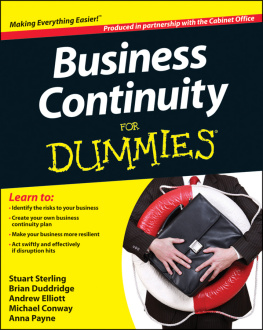
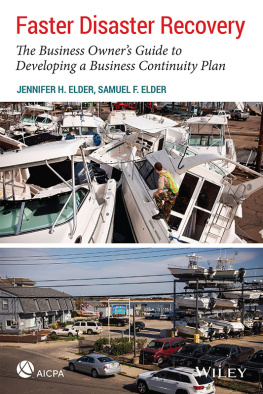



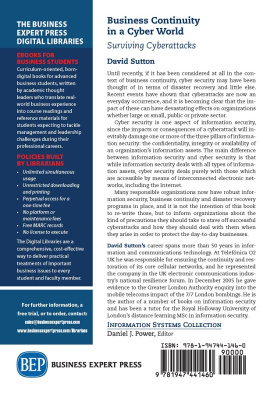
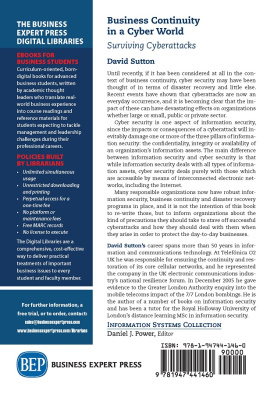
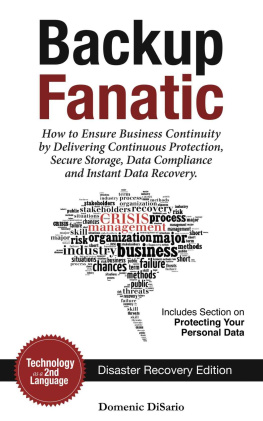

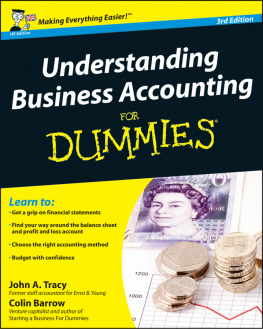
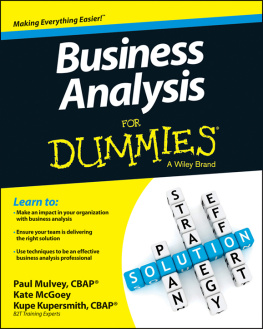




 Provide a source of jobs.
Provide a source of jobs.